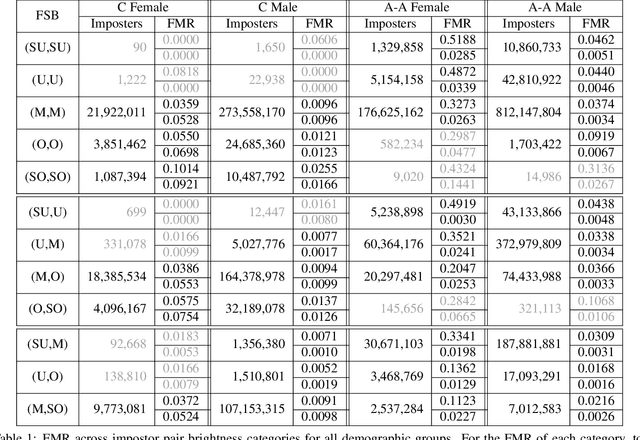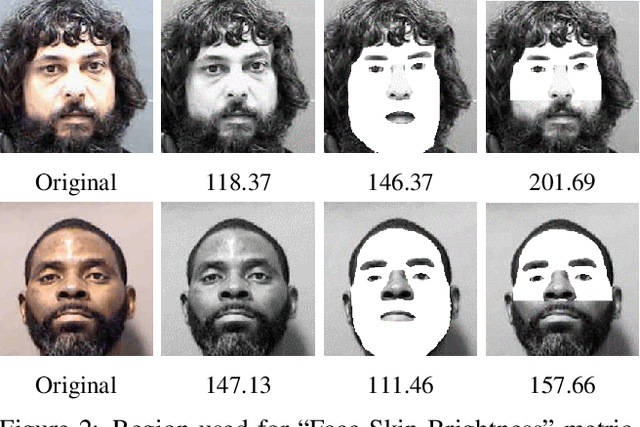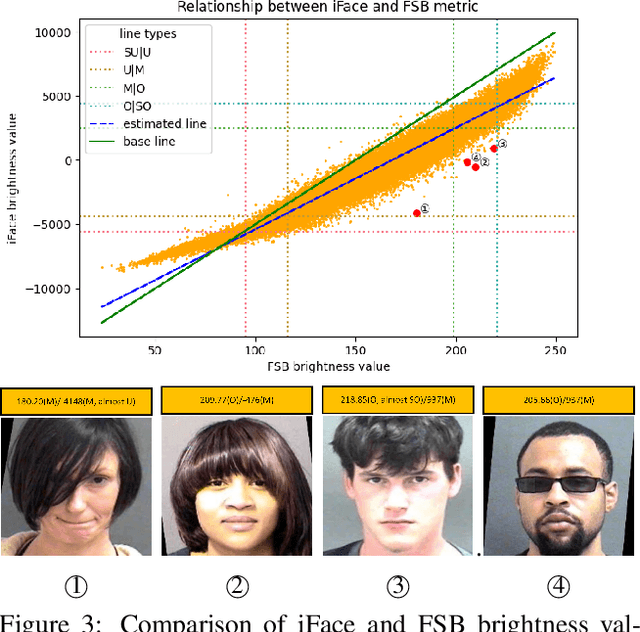Face Recognition Accuracy Across Demographics: Shining a Light Into the Problem
Paper and Code
Jun 04, 2022



This is the first work that we are aware of to explore how the level of brightness of the skin region in a pair of face images impacts face recognition accuracy. Image pairs with both images having mean face skin brightness in an upper-middle range of brightness are found to have the highest matching accuracy across demographics and matchers. Image pairs with both images having mean face skin brightness that is too dark or too light are found to have an increased false match rate (FMR). Image pairs with strongly different face skin brightness are found to have decreased FMR and increased false non-match rate (FNMR). Using a brightness information metric that captures the variation in brightness in the face skin region, the variation in matching accuracy is shown to correlate with the level of information available in the face skin region. For operational scenarios where image acquisition is controlled, we propose acquiring images with lighting adjusted to yield face skin brightness in a narrow range.
 Add to Chrome
Add to Chrome Add to Firefox
Add to Firefox Add to Edge
Add to Edge